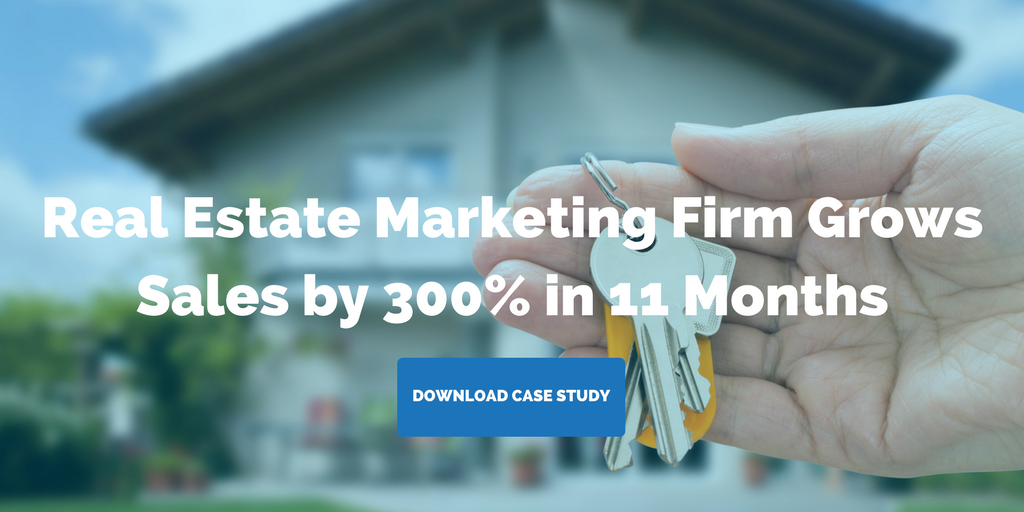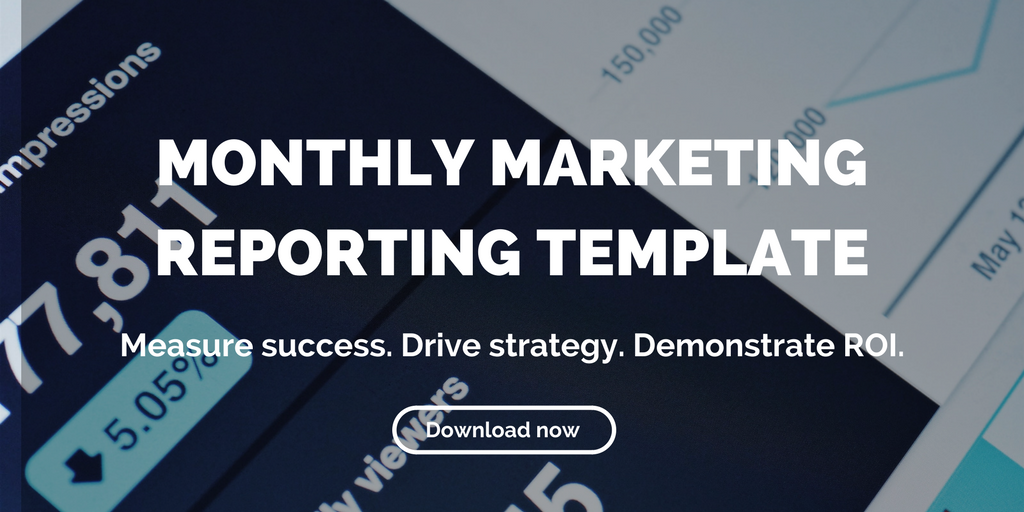Your search results for "Analytics"

5 Effective Ways to Use Instagram for Your Luxury Real Estate Brand
With its highly visual platform and growing user base, Instagram is a natural fit for real estate marketing. Here are five ways to make Instagram work for your luxury real estate brand.
Highlights:
- Instagram posts should reflect your luxury real estate brand and maintain the overall tone you set through other marketing efforts.
- Successful brands on Instagram pay close attention to how their posts reflect their brand’s message.
- Hashtags allow your posts to be seen by users outside of your circle of followers, so using relevant, industry-specific hashtags is key in reaching new audiences.
Looking to engage with new audiences and connect with your target market? Instagram is the perfect platform for luxury real estate brands looking to expand their reach. In fact, engagement on Instagram is ten times higher than it is for Facebook, and the demographic is substantially more affluent—making it a no-brainer for luxury real estate.
But to get the most out of this highly visual platform, it’s important for real estate marketers to post the right kind of content. The content should reflect your brand and maintain the overall tone you set through other marketing efforts (i.e. your website, blog, etc.). Marketers who want to reap the benefits of marketing on Instagram need to do more than just post appealing pictures with fun filters. Here are five effective ways to make sure you’re getting the most out of your marketing efforts on Instagram.
5 effective ways to market your luxury real estate brand on Instagram
1. Focus on your target audience
Who are you trying to reach with your Instagram posts? Trying to post compelling content for an unidentified audience is like taking a shot in the dark. Knowing who your ideal buyer or tenant is allows you to create content that is informative, educational, and entertaining to that specific person.
When creating (or curating) content for Instagram, the more detailed you can be with your buyer persona(s), the more specific and effective your content can become. The personal connection is particularly crucial for real estate buyers, and understanding your target audience is key to making that connection.
2. Cultivate your brand message
For luxury real estate developers and property management companies, branding is key for target buyers (or tenants) to know about your properties and understand the lifestyle that the property offers. Creating consistent brand messaging that reflects the tone and voice of your marketing collateral helps audiences grow brand awareness.
Successful brands on Instagram pay close attention to how their posts reflect their brand’s message. Posts have an overarching theme that mirror the overall brand image. Images should do more than just promote your properties. They should add value to your luxury real estate brand’s unique story.
3. Use CTAs
Conversions, revenue, business, and profit—they all depend on the Call to Action. Don’t just post interesting content, give your followers a chance to do something with your posts. CTAs are key to the success of any online marketing initiative, including Instagram posts. Try adding CTAs to each of your posts to encourage audiences to “take an action”. Providing opportunities for followers to visit your website or download valuable resources will boost conversion rates.
4. Make the most of your hashtags
Hashtags allow your posts to be seen by users outside of your circle of followers, so using relevant, industry-specific hashtags is key in reaching new audiences. Hashtags automatically function as links, making your posts easily searchable and available to users looking for specific hashtags. For example, if a user interested in San Diego real estate clicks on #sdhomesforsale, all public posts labeled with that hashtag will show up.
As you start experimenting with adding hashtags to your social media posts, make sure to:
- Use relevant terms.
- Research trending topics as you chose your content.
- Create your own hashtags to match your luxury real estate brand.
- Make sure the audience setting on your posts is “public.”
5. Check your analytics
Many real estate businesses struggle with measuring ROI on social networks. Even for seasoned digital marketers, the collection of data is one of the most daunting tasks. But it’s important to gain insight into the who, when, and where of your Instagram traffic.
Use Instagram Insights to learn more about the people interacting with your luxury real estate brand on Instagram. You can also see which posts your audience sees and engages with the most, as well as a breakdown of demographics. Analyzing your posts will help determine what’s working for your brand and where changes need to be made.
Need help getting started with optimizing your digital marketing efforts? We’re here to help.
Related posts:
- 5 Real Estate Instagram Accounts You Should be Following
- Measure Social Media Success in Terms of Potential, not Dollar Amount
- How to Measure Social Media ROI with Google Analytics for Real Estate
Your search results for "Analytics"
Blog
Real Estate Blog 6 Luxury Real Estate Trends to Keep an Eye On by Katie Russell | Sep 17, 2019 | Blog, Content Marketing, Real Estate Marketing | 0 CommentsFrom security and privacy measures to wellness amenities, here are six luxury real estate trends for marketers...Your search results for "Analytics"

Top 5 Blogs for Real Estate Marketers
Blogs are an ideal source of knowledge and insights for real estate marketing professionals. Here are our favorite five blogs for real estate marketers to follow.
Highlights:
- Up-to-date knowledge is crucial for real estate marketers.
- Following the right blogs sets you up for success and keeps you aware of conversations in the industry.
- These five blogs for real estate marketers are our favorite sources of knowledge and insights.
Promoting your properties, growing your business, converting leads — it’s all about having the knowledge-base that shapes your strategies and solutions. There’s always something new to learn in real estate marketing. We think this makes it an incredibly exciting field — but we also know that it can be equally overwhelming.
If you know where to look, there’s a vibrant conversation going on among real estate marketers as an ever-growing field of ideas is being generated and discussed. We’ve compiled this list of our five favorite blogs for real estate marketers that we think you should be following, too. These are ideal places for information and ideas about overall best practices, social media use, writing effective content, and more.
5 blogs for real estate marketers
1. Propmodo Real Estate
Propmodo Real Estate is the place for cutting-edge insights into how technology is changing the way commercial real estate is acquired, managed, and used. This multimedia site follows people, practices, and tools that are shaping the business of real estate.
A few of our favorite posts include a discussion of the commercial real estate sector’s embrace of lease automation, and “Viral Marketing and Buzz Marketing: What is Better for Real Estate Business?”
2. BombBomb
Like Propmodo, BombBomb’s blog is real estate-specific and dedicated to building relationships through video to create more opportunities in email, text, and social media. It’s particularly strong on email marketing, which is still the most profitable form of marketing online.
We love what BombBomb has to say about the nuts and bolts aspects of real estate marketing, but they also have some great think pieces. For example, a recent post and podcast episode on “Trust, Neuroscience, and the Customer Experience” explored the neuroscience behind trusting relationships with clients, the nature of trust itself, and how to cultivate it.
3. HubSpot Marketing
HubSpot Marketing is a phenomenal resource for all content marketers, including real estate marketers. It covers everything you need to know to become a marketing whiz. Topics include SEO, blogging, social media, lead generation, email marketing, lead management, analytics, and more.
These experts in content marketing may not be writing specifically about real estate, but we have them on the list, since it’s worthwhile for real estate marketers to be aware of the larger ideas and solutions being discussed as it pertains to content marketing.
4. Geek Estate
A good choice for the tech-savvy marketer, Geek Estate focuses on what’s happening in real estate technology — for example, the changes happening with Zillow and Trulia. This is a great resource for being on the cutting-edge of upcoming trends.
Geek Estate is a private community of real estate technologists, innovators, and founders. Much of their content requires a subscription, and membership could be well worth your while. The blog has recently tackled the subject of “Uberizing Real Estate with Zillow Offers.”
5. Social Media Today
Like Hubspot, Social Media Today isn’t specifically focused on real estate. However, it’s a great go-to resource for all things social media, a crucial topic for real estate marketers. The blog frequently features insights from leaders in the field. And SMT’s team of influencers covers topics including social media developments, trending, social marketing, digital strategy, and content marketing.
SMT is a particularly good source of up-to-the-minute news from the social media and larger tech sector. The site keeps closely abreast of the latest developments, and keeps a roundup of social media updates separately archived for easy perusal.
Read them all or pick your favorite — you’ll benefit from increasing your knowledge.
Related Posts:
- Infographic: Real Estate Social Media Marketing Strategies
- A Visual Guide to Social Media Posting Frequency for Real Estate
- Video: Top Real Estate Marketing Trends 2019
Your search results for "Analytics"

5 Tips to Make Your Real Estate Website an Effective Selling Tool
Use your real estate website to boost engagement and drive sales. Here are five tips to start using your website as a selling tool in the sales process.
Highlights:
- In order to move visitors down the sales funnel, a brand’s website needs to be informative, visually pleasing, and functional.
- Your brand strategy should drive the layout, design and content to make sure all elements of your website align.
- A testimonial page on your website provides an opportunity for clients to talk about how satisfied they are with your properties, creating customer loyalty and increased brand trust.
Your real estate website can be a powerful tool in driving business growth. After all, it is the public face of your company. But the demands of digital marketing — social media, blog writing, video — can take center stage, leaving your website behind the scenes.
Real estate marketers need to give websites the attention they deserve. After all, most of your digital marketing efforts are driving visitors to your site. What happens once prospects get to your real estate website is key to the buyer’s journey. In order to move visitors down the sales funnel, a brand’s website needs to be informative, visually pleasing, and functional.
Here are 5 updates you should make to your company real estate website to help increase sales.
1. Brand messaging
Your website might be beautiful, but it also needs to be valuable. What makes your property different from other properties? What makes your brand better than the competition? Make sure that your website accurately depicts your brand and what makes it unique. Your brand strategy should drive the layout, design and content to make sure all elements of your website align.
2. Live chat
Did you know that 82% of consumers rate an “immediate” response as important or very important if they have a question? Live chat is one of the easiest ways to communicate with leads, in real time. The way prospects communicate with brands is changing. More and more leads want immediate responses and live chat gives brands an opportunity to deliver on their wants and needs. It’s also an effective way to capture contact information for visitor’s already poking around on your website.
3. Video
The popularity of video sites, like YouTube and Vimeo, is just the starting point for capitalizing on your videos. If you’ve invested in a corporate video or even shot quick interviews in your office, start using them on your website. The brain processes visual information 60,000 times faster than text, so providing videos on your website helps your brand’s messaging resonate longer with visitors. A great example of a real estate brand utilizing video is Ditto. The homepage features a large video that is visually appealing and is a sure way to keep visitors on their site longer.
4. Testimonials
Visitors to your website are learning about your real estate brand through your content (text and visual), but they may still be hesitant to put their trust in your hands. As a marketer, you know that customer testimonials are a great way to increase trust, so why not showcase your satisfied — dare I say — happy clients? A testimonial page on your website provides an opportunity for clients to talk about how satisfied they are with your properties, creating customer loyalty and increased brand trust.
5. Measure
We talk a lot about the importance of a data-driven approach when it comes to measuring success. To grow your business strategically, you need to track your efforts, analyze successes and failures, and determine ROI. This holds true for all aspects of your digital marketing strategy, including your website. Use tools, like Google Analytics, to regularly track traffic and engagement. Determine which pages visitors are converting on and why and make sure to tweak pages that have a high exit rate.
It’s no longer optional for businesses to have a website, it’s essential. Websites are a virtual profile of your brand and when used correctly can encourage action by prospects. Utilizing these tips will help boost engagement and drive sales through your real estate website site.
Related posts:
- 3 Ways to Boost Your Real Estate Marketing with Video
- Video: How Content Marketing for Real Estate Can Help Sell Properties
- 4 Types of Content Real Estate Marketers Need to Be Using
Your search results for "Analytics"

4 Things to Do in Light of Facebook News Feed Changes
As users will see less content from businesses, brands, and media, you need to adjust your strategy to appear on your followers’ Facebook News Feed.
Mark Zuckerberg once again rocked the world on Jan. 11 — at least for businesses — when he announced that the Facebook News Feed was evolving to include less public content, meaning content from Pages of businesses, brands, and media. The algorithm will now prioritize posts from friends and family (over public posts) and those that “spark conversations and meaningful interactions between people.”
Not surprisingly, businesses balked at the thought of seeing their organic reach, video watch time, and referral traffic take a nose dive.
The fact is, this is not a huge surprise. Facebook has long been taking steps in this direction, including the testing of Explore Feed last year. Even though you may have anticipated that some changes to Facebook for businesses were coming, you may be tempted to suddenly stop maintaining your Facebook Page. Is it worth posting content to Facebook if it is not going to reach your followers after these new changes?
Our answer: Facebook is still worthwhile for your properties. But Facebook’s recent changes do merit your close attention to — and perhaps a revisiting of — your Facebook strategy. We’ve compiled a list of things you need to know/do in light of the new changes to Facebook News Feed. Take a look:
1. Focus on news-worthy Facebook News Feed content that drives engagement.
Zuckerberg says, “I’m changing the goal I give our product teams from focusing on helping you find relevant content to helping you have more meaningful social interactions.” That means that engagement will now mean more than ever before for content visibility.
In other words, posting your blog content to Facebook is no longer going to cut it. If your posts don’t garner comments or reactions, it’s time to go back to the drawing board. You’ll need to start thinking of Facebook as a place to post and discuss active news items, hot-button issues, and highly shareable content (content that is educational or entertaining, for example).
Scheduling multiple posts ahead of time, though convenient, will probably land your content further into the depths of oblivion. You’re going to have to pay attention, actively seek to generate conversation between users with your posts, and fight to win space on your followers’ feeds.
2. Tell your community to access the See First feature.
Users who still want to see posts from certain Pages they follow can choose “See First” in News Feed Preferences. So, quite simply, we suggest asking your followers to choose to see your content.
While some proactive followers may do this on their own, we encourage you to explicitly remind your community to do this. Remember that people are most likely to do what you want them to when you make it easy, exact, and clear. So, send them an email with directions. Or put it in your newsletter or a blog post. Just tell them to do it.
One thing you don’t want to do: goad people into commenting on your posts to increase your content visibility. Facebook has explicitly stated that it will demote “engagement bait,” or posts that ask for comments or reactions. You will actually hurt your content and properties by doing this.
3. Get your executives and agents on social media.
Your executives and agents can act as brand ambassadors for your business and properties on social media, and Facebook’s latest announcement underscores the importance of them doing so.
Your company’s executives and agents are the most visible people in your business. For many of your industry peers and buyers, they are the face of your brand and properties. Get them active on Facebook to add meaningful thoughts to your company’s posted content, to engage in discussions, and to share newsworthy content of their own.
It’s important to note they should not do this in a superficial way. Rather, they should actively seek to add value to your Facebook content. By engaging on Facebook, your people emerge as thought leaders, which boosts your brand’s visibility and reputation.
4. Consider your ad budget.
In the past, we have recommended adding some social media advertising to a traditional content marketing strategy as a way for clients to boost their efforts. It speeds things up. But those companies that are just starting out or that rely heavily on referral traffic might want to consider reallocating budget to sponsored ads.
Final thoughts on the new Facebook News Feed
This is a shift, yes. A challenge, for sure. But not one that’s insurmountable — or even contrary to the basic principles of good, data-driven content marketing.
Remember, Facebook is not eliminating Page content from News Feed altogether — just limiting it. The most relevant, engaging Page content will win that space. So, seek to understand your target audience and produce high-quality, original content that engages those people, and you’ll come out on top of the new Facebook News Feed.
Related posts:




